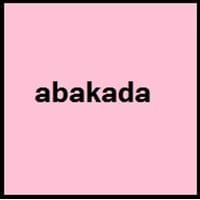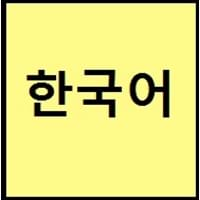Countries
Philippines
China, Jilin Province, North Korea, South Korea, Yanbian
National Language
Philippines
North Korea, South Korea
Second Language
Filipinos
Not spoken in any of the countries
Speaking Continents
Asia, Australia
Asia
Minority Language
Australia, Canada, Guam, Hong Kong, New Zealand, Singapore, United Kingdom
Japan, People's Republic of China, Russia, United States of America
Regulated By
Komisyon sa Wikang Filipino, National Languages Committee
The National Institute of the Korean Language
Interesting Facts
- In 1593, "Doctrina Christiana" was first book written in two versions of Tagalog.
- The name "Tagalog" means "native to" and "river". "Tagalog"is derived from taga ilog, which means "inhabitants of the river".
- Korean has borrowed words from English and Chinese.
- Korean has two counting systems. First, is based on Chinese characters and numbers are similar to Chinese numbers, and second counting system is from words unique to Korea.
Similar To
Filipino, Cebuano and Spanish Languages
Chinese and Japanese languages
Derived From
Not Available
Not Available
Alphabets in
Tagalog-Alphabets.jpg#200
Korean-Alphabets.jpg#200
Writing Direction
Left-To-Right, Horizontal
Left-To-Right, Horizontal, Top-To-Bottom
Hello
Kamusta
안녕하세요. (annyeonghaseyo.)
Thank You
Salamat po
감사합니다 (gamsahabnida)
How Are You?
Kamusta ka na?
어떻게 지내세요? (eotteohge jinaeseyo?)
Good Night
Magandang gabi
안녕히 주무세요 (annyeonghi jumuseyo)
Good Evening
Magandang gabi po
안녕하세요 (annyeonghaseyo.)
Good Afternoon
Magandang hapon po
안녕하십니까 (annyeong hashimnikka)
Good Morning
Magandang umaga po
안녕히 주무셨어요 (An-yŏng-hi ju-mu-shŏ-ssŏ-yo)
Please
pakiusap
하십시오 (hasibsio)
Sorry
pinagsisisihan
죄송합니다 (joesonghabnida)
I Love You
Iniibig kita
당신을 사랑합니다 (dangsin-eul salanghabnida)
Excuse Me
Ipagpaumanhin ninyo ako
실례합니다 (sillyehabnida)
Dialect 1
Batangas Tagalog
Jeju
Where They Speak
Batangas, Gabon
South Korea
How Many People Speak
Not Available
Dialect 2
Bisalog
Gyeongsang
Where They Speak
Philippines
South Korea
How Many People Speak
Not Available
Dialect 3
Filipino
Hamgyŏng
Where They Speak
Philippines
China, North Korea
How Many People Speak
Not Available
Second Language Speakers
Not Available
Native Name
Tagalog
한국어 (조선말)
Alternative Names
Filipino, Pilipino
Hanguk Mal, Hanguk Uh
French Name
tagalog
coréen
German Name
Tagalog
Koreanisch
Pronunciation
[tɐˈɡaːloɡ]
Not Available
Ethnicity
Tagalog people
Koreans
Origin
1593
Before 1st century
Language Family
Austronesian Family
Koreanic Family
Subgroup
Indonesian
Not Available
Branch
Not Available
Not Available
Early Forms
Proto-Philippine, Old Tagalog, Classical Tagalog, Tagalog
Old Korean, Middle Korean and Korean
Standard Forms
Filipino
Pluricentric Standard Korean, South Korean standard and North Korean standard
Signed Forms
Not Available
Korean Sign Language
Scope
Individual
Individual
ISO 639 6
Not Available
Not Available
Glottocode
taga1269
kore1280
Linguasphere
31-CKA
45-AAA
Language Type
Living
Living
Language Linguistic Typology
Object-Verb-Subject, Subject-Verb-Object, Verb-Object-Subject, Verb-Subject-Object
Subject-Object-Verb
Language Morphological Typology
Not Available
Agglutinative
All Tagalog and Korean Dialects
Most languages have dialects where each dialect differ from other dialect with respect to grammar and vocabulary. Here you will get to know all Tagalog and Korean dialects. Various dialects of Tagalog and Korean language differ in their pronunciations and words. Dialects of Tagalog are spoken in different Tagalog Speaking Countries whereas Korean Dialects are spoken in different Korean speaking countries. Also the number of people speaking Tagalog vs Korean Dialects varies from few thousands to many millions. Some of the Tagalog dialects include: Batangas Tagalog, Bisalog. Korean dialects include: Jeju , Gyeongsang. Also learn about dialects in South American Languages and North American Languages.
Tagalog and Korean Speaking population
Tagalog and Korean speaking population is one of the factors based on which Tagalog and Korean languages can be compared. The total count of Tagalog and Korean Speaking population in percentage is also given. The percentage of people speaking Tagalog language is 0.42 % whereas the percentage of people speaking Korean language is 1.14 %. When we compare the speaking population of any two languages we get to know which of two languages is more popular. Find more details about how many people speak Tagalog and Korean on Tagalog vs Korean where you will get native speakers, speaking population in percentage and native names.
Tagalog and Korean Language Codes
Tagalog and Korean language codes are used in those applications where using language names are tedious. Tagalog and Korean Language Codes include all the international language codes, glottocodes and linguasphere.





